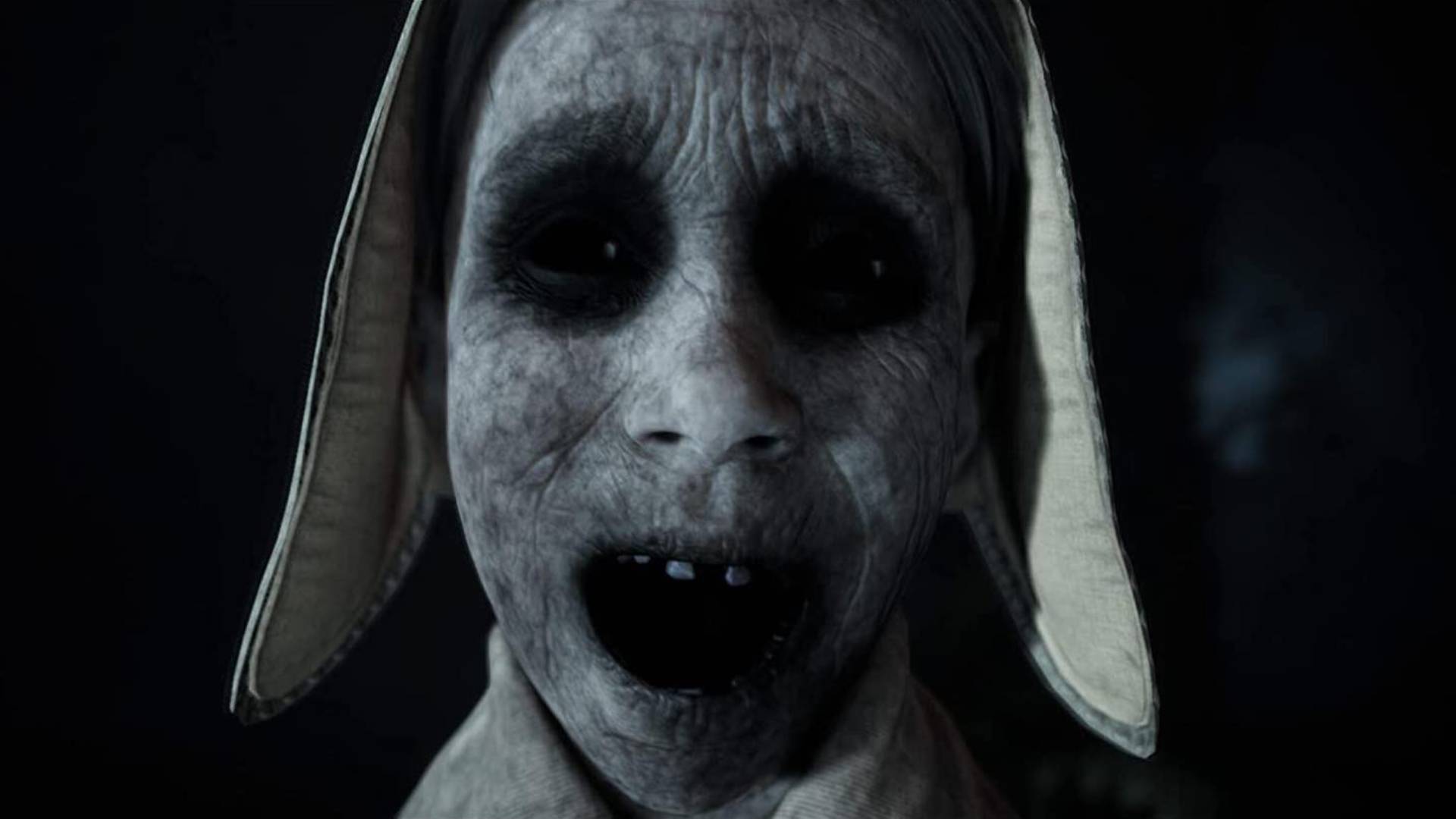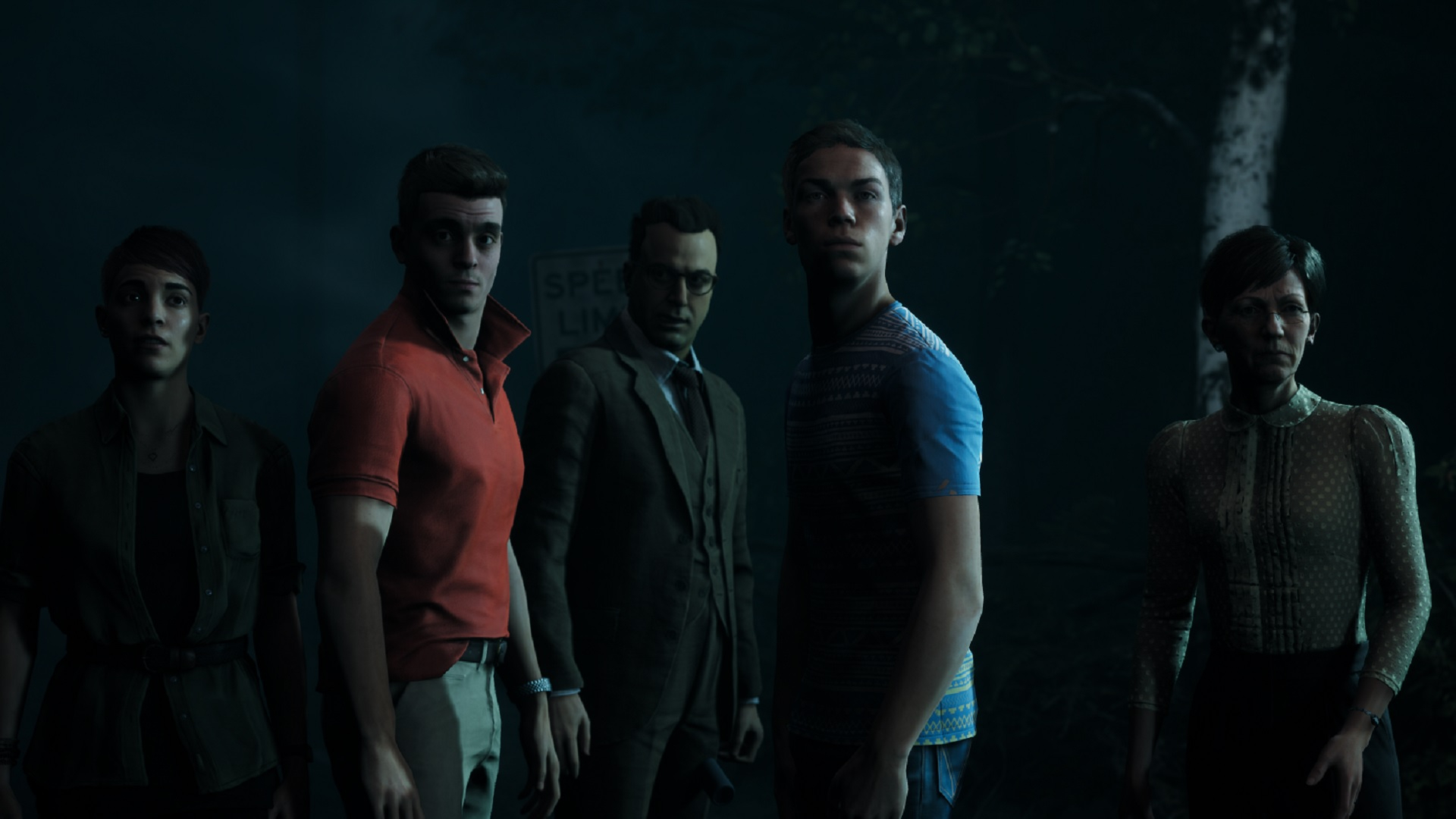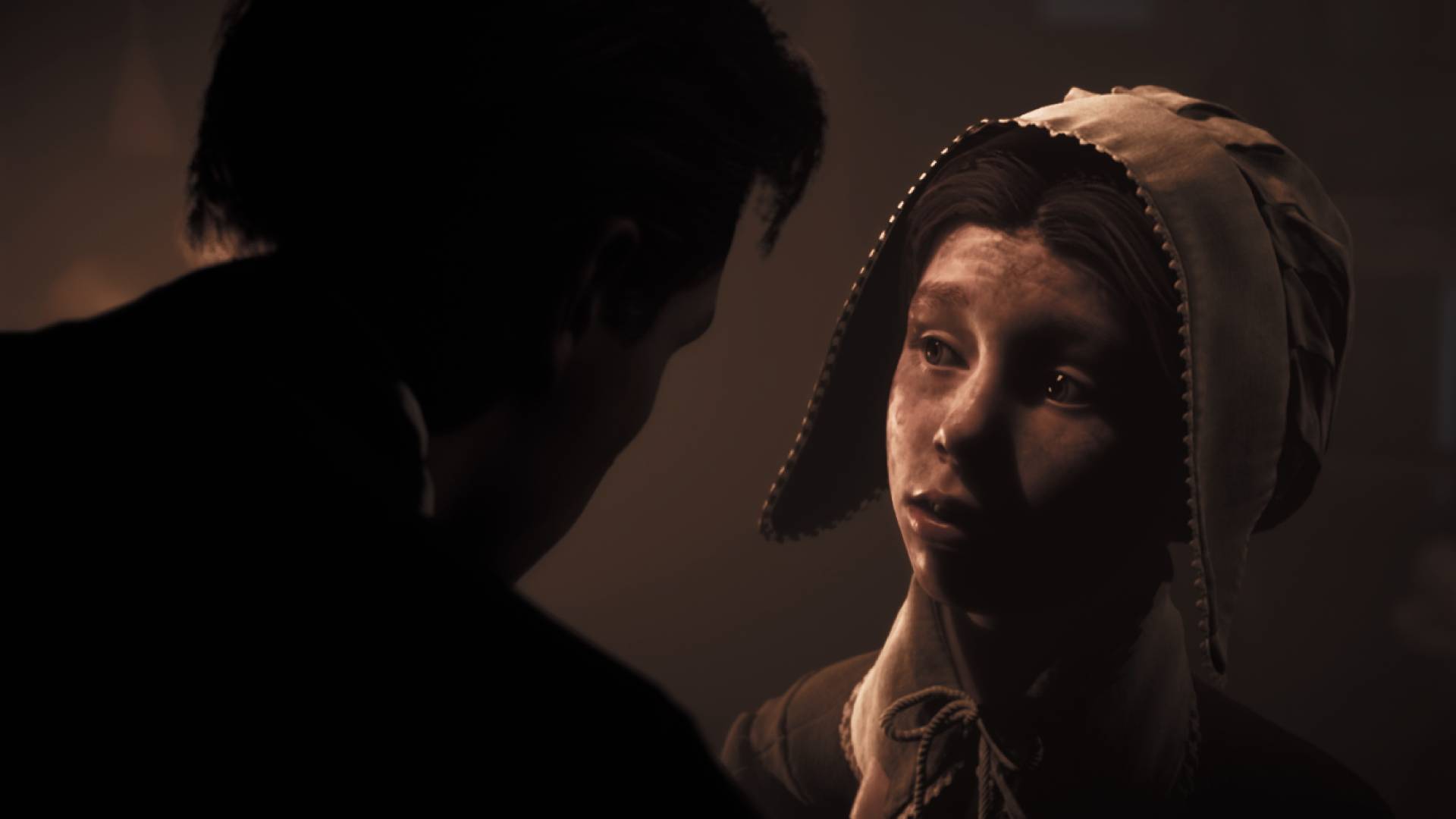Little Hope takes all of Man of Medan's strengths and has listened to fans about what needs improving
The second installment of Supermassive's horror anthology tightens up its horror chops, both literally and metaphorically

Little Hope is not messing about. Within the first 20 minutes of gameplay, six people die horribly almost seconds apart: fire, crushing, fire again, impaling, more fire, and an accidental hanging. It’s almost funny, just how many of the characters meet horrible ends in a 'looking through fingers while laughing and wincing' kind of way so quickly after meeting them.
Until man exists no more
This is the second game in the Dark Pictures anthology, after Man of Medan, and takes place in the town that gives it its name. It's also the site of 17th century witch trial atrocities that have left… something behind, that a group of students (including Midsommar and Bandersnatch's Will Poulter) need to unravel and survive after their bus crashes there. In the 20 minutes I saw of it, the horror influences are clear. The people who die at the start of my demo do so in a way that heavily echoes The Omen as unseen influences conspire to trigger cascading, horrific accidents. There's heavy shades of Silent Hill too, as a ghostly dress-wearing girl flickers in and out of sight through fog, just long enough to scare or cause a car crash.
The other influences mentioned by Supermassive CEO and director Pete Samuels all lean strongly into a unseen presence kind of vibe with a list that includes The Witch, Blair Witch, and Hellraiser. The latter seems to tie into a mention of 'Cenobite-esque' demons that follow the students after a brush with past events, as well as a final reference to It Follows, which suggests these creatures will always be closing in on them. Those references are a good base to build from and, without too many spoilers, what I've seen seems to suggest a time spanning merger of classic witch trial drama and pursuit horror movies.
I speak my own sins; I cannot judge another

Continuing Dark Anthology's 'thing' of offering a two-player co-op mode where each participant can see and experience different things in the same game session, it's not entirely clear what's to be believed. There are at least three variations of Will Poulter's character, for example: in the 17th century past, the present, and the opening where everyone dies – apparently a dream, but possibly, a memory or replay of past events. Working out what’s going on is obviously a key part, although Samuels is keen to point out it won't all be down to hallucinations this time. (They, while helping to build a great twist in Man of Medan, were a large part of the reason the game lacked threat once the reveal had swished its cape).
While the influence recognition and ideas sound good, it's the way Supermassive is approaching and reacting to fan feedback from the previous game that is the most interesting part of what I've seen so far. The opening slaughterhouse moment described above is essentially a grisly series of in-game sacrifices to the altar of 'we’re listening'. While both Little Hope and Man of Medan started development at the same time, three years ago (and the third game is "in full production" according Samuels), the episodic release format means Supermassive has the time to listen and make changes where necessary.
So this new installment is building on the best bits of Man of Medan, and tweaking the elements that perhaps didn't land as soundly. The first game had some great moments: a terrifying middle section and some great atmosphere building gave it some punch, but it also had a dialogue heavy start and a threat-free ending once the danger had been revealed. Little Hope has been tuned in the last few months to take on feedback from reviews and fans, and Samuels has been refreshingly honest about it – when was the last time you heard a developer open its game reveal by saying "Man of Medan is loved by many but we recognize that this love was neither absolute or universal".

Man of Medan is loved by many but we recognise that this love was neither absolute or universal.
Pete Samuels, Supermassive CEO
As a result, Little Hope has made subtle changes to the camera, the pacing, QTEs, as well as the sense of threat and overall danger. "We don't see any feedback as unwelcome good or bad, positive or negative, it just helps us to improve," Samuels explains. "One thing raised was that Man of Medan took a little time to get its pace up," he continues, explaining the inspiration behind Little Hope's gruesome opener.
Weekly digests, tales from the communities you love, and more
The somewhat inconsistent level of threat in Man of Medan also gets a mention, as Samuels talks about the "polar views" on the previous games scare factor. "It's a very personal thing, [but] there's a lot of feedback of people being really frightened [and] there's a whole lot of people that genuinely felt that it wasn't as scary as they wanted it to be." How things have changed exactly in Little Hope are secret but Samuels says "there's a huge increase in this persistence of threat" while name checking It Follows directly. "Even though there's nothing really in your face, or very infrequently, is the threat near? It's always there. That's kind of what we’re trying to achieve in Little Hope."
There are more mechanical adjustments too. The QTE system in Man of Medan could, for example, very abruptly decide the fate of a character without warning. This, Samuels tells me, has been altered in Little Hope. "There were some comments that they were unfair and they took control of the narrative away because it became about how fast your finger was," he says. "People felt too much happened in the story as a result of that, as a result of QTEs, rather than decisions that they made." That means Little Hope is "trying different things with UI" to help people be more prepared, as well as improving the messaging of how a QTE can be the result of decisions you’ve made rather than a surprise lurking in the dark.
We have such sights to show you

Then there's the camera. That's something that always "divides an audience", Samuels tells me, although Supermassive is still committed to using a fixed camera when it needs to. The device is, after all, a traditional tool of horror games. "It helps with creating tension because you only see what we let you see," explains Samuels, adding, "so what’s there that we’re not letting you see?" Nonetheless, however, he admits "there are parts of the audience that are more comfortable with different camera controls".
That doesn’t mean Little Hope has gone full third person – there are still jump cuts and creepy angles – but the team recognizes that change isn't always a bad thing to embrace. "Rather than just be stubborn and pigheaded about it, we had a really good look at what we can do," Samuels tells me. "Fixed cameras really suit large parts of our storytelling. However, there are parts where different camera systems might work better. So we put a lot of work into, not just an additional camera system, but how to transition between the two without feeling like two different games."
That translates into a more traditional camera in larger areas where you have more freedom to explore but that seamlessly transitions into more scare loving close cuts when needed. "In some environments it works really well [and] it actually improves the horror by giving you that feeling of 'Okay, I can now have a look around and see what's there'". In the demo, 'what’s there' was mainly bad things but having more freedom to discover that yourself means you take some ownership of the resulting scares, which in turn enhances them.
These changes, and the understanding of why they're being made, are exactly the sort of things you want to hear. (And to reiterate an earlier point, it's super rare to hear developers talk so openly about this sort of thing). Man of Medan had some great moments and, inconsistencies aside, is still a game I’d recommend – especially in it’s 'holy shit, you saw what happen?!' two-player mode. Supermassive sounds like it's making all the right moves to build on that foundation, which makes Little Hope look like another promising slice of interactive horror.

Little Hope is one of the big upcoming games of 2020, launching later this summer on Xbox One, PlayStation 4, and PC.

I'm GamesRadar's Managing Editor for guides, which means I run GamesRadar's guides and tips content. I also write reviews, previews and features, largely about horror, action adventure, FPS and open world games. I previously worked on Kotaku, and the Official PlayStation Magazine and website.


